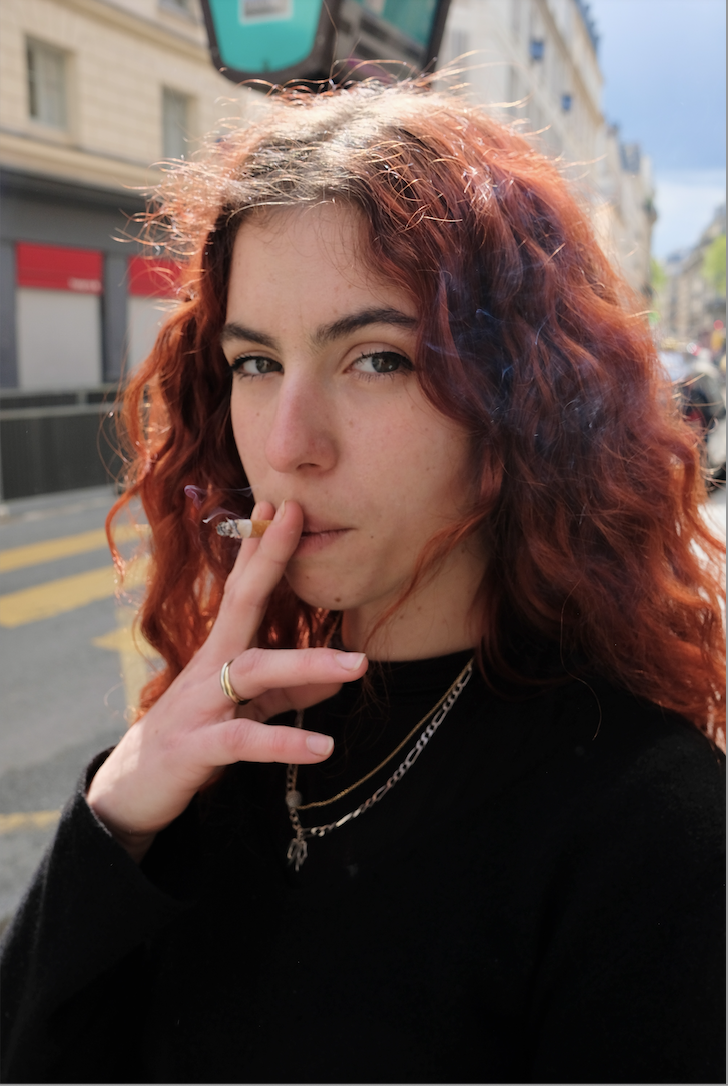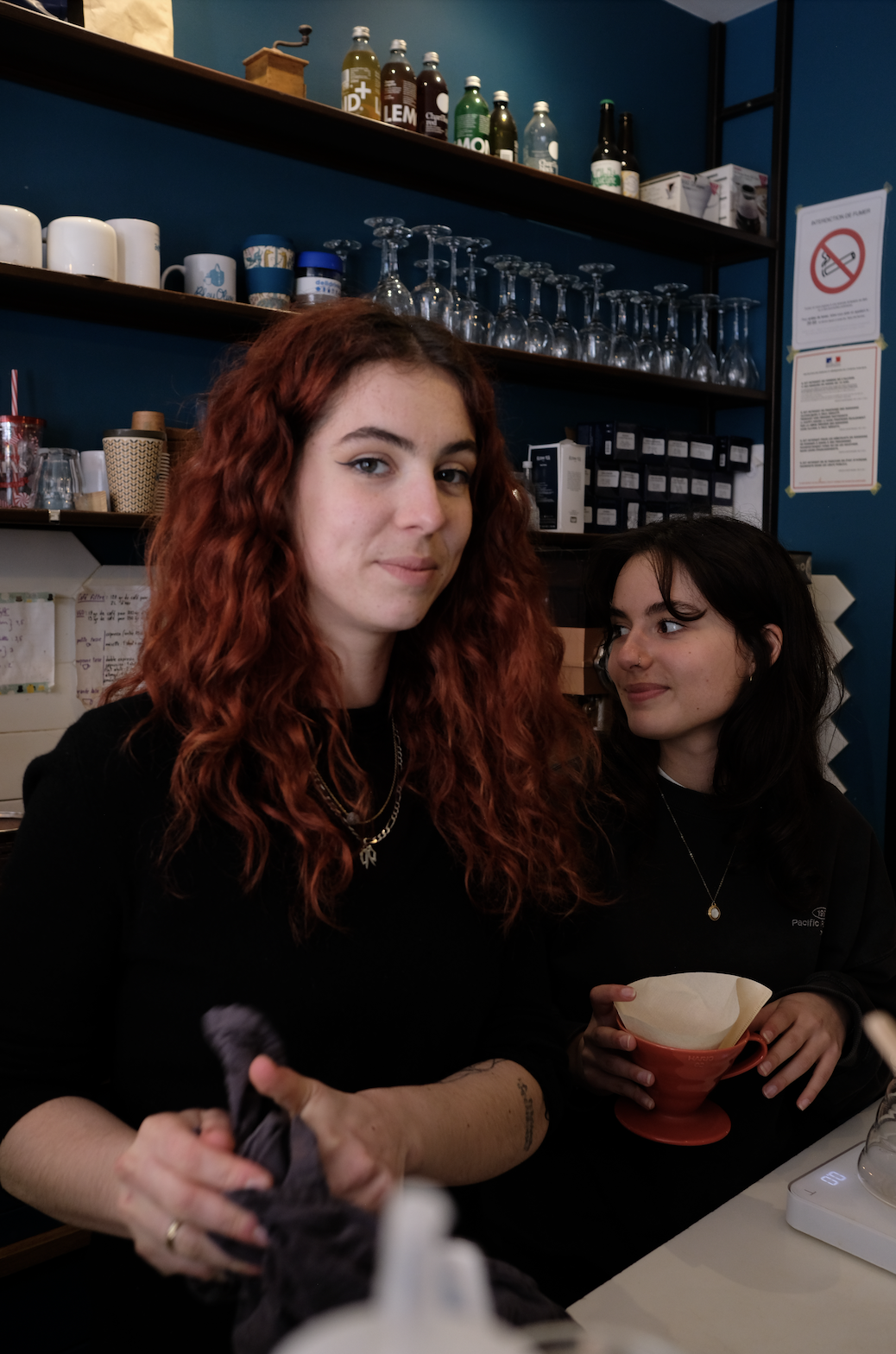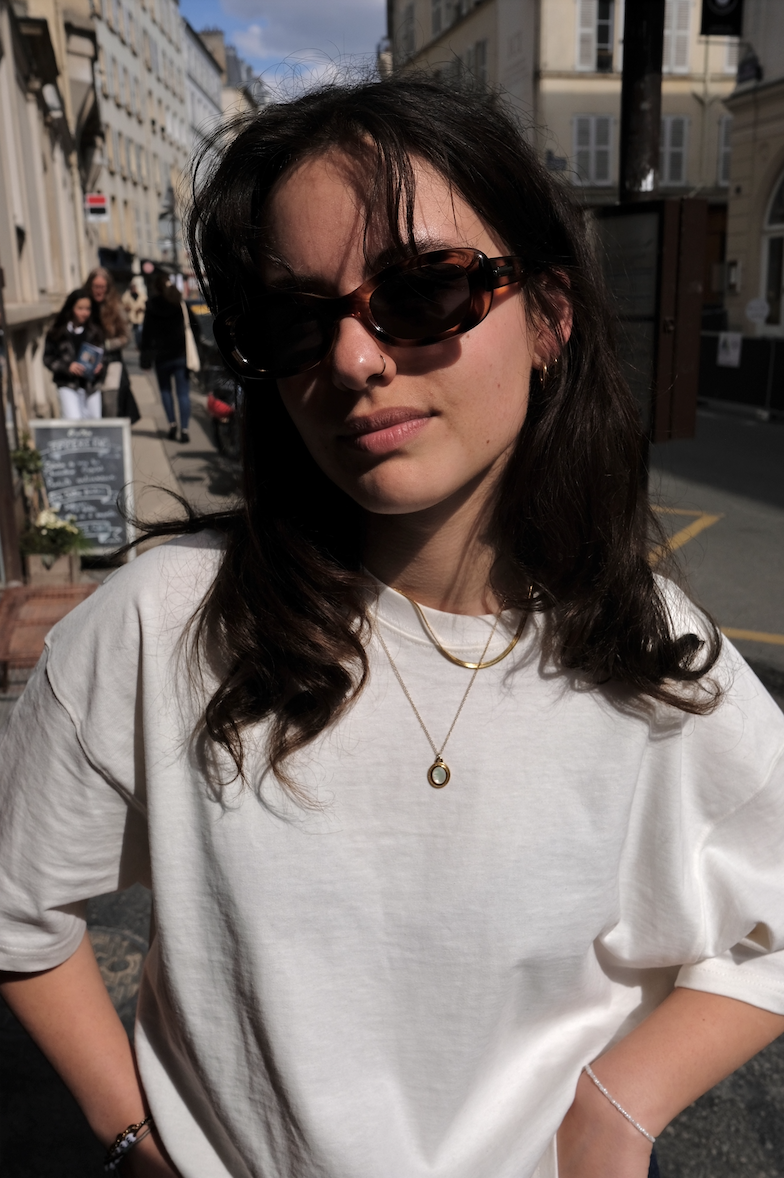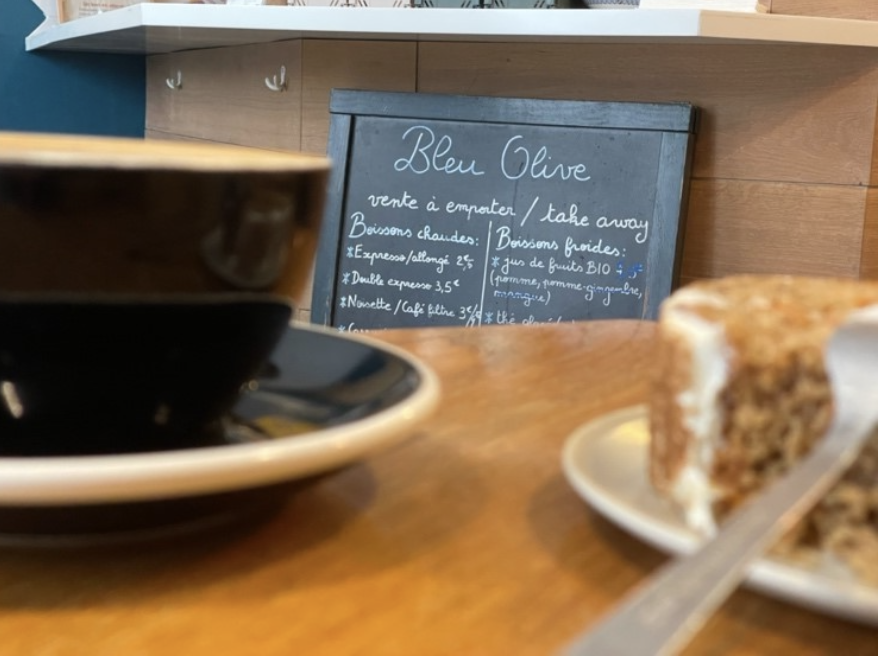Why Does Your Barista Dress Like That?
If you have ever ventured for coffee in the 7th arrondissement, you may have made friends with Bleu Olive. This family-owned coffee shop has a knack for drawing in international customers seeking a traditional coffee shop experience from its artisanal coffee menu, cozy furniture, and, of course, vibrant young baristas with an alternative fashion sense. Unlike corporate coffee companies, the Bleu Olive crew wear what they see fit, and for them it's not a trivial matter.
“I feel like I pay more attention [to what I wear] after working here because new people see me every day”, Juline Hanaut, a 23-year-old Bleu Olive barista. “I want to make a good impression, and I feel like if you go to a place to have a coffee and the woman behind the counter is wearing PJs it's not the same experience.

Hanaut wore an oversized sweater made of a black fuzzy fabric, and baggy black jeans with attached loops at the knees. The only spot of color she had was her recently dyed red shock of hair. She summarized her barista style as “not too classy but kind of put together.”
I asked jokingly if the loops hanging off her pants were functional, perhaps to hang bags of coffee beans. She simply replied, “it's a job where you are moving all the time, so you want to be fashionable but also comfortable”, and after considering the question further, she added that she has “never been one to dress functionally for the job.”

Hanaut finds it difficult to rectify the hierarchy of style and functionality. While she wears sneakers that are comfortable for long hours on her feet, she also wears sweaters with uncontrollable sleeves. “the worst sweaters to work in, because the sleeves keep dropping into everything.”
“I think my work as a barista made me dress more comfortably, before I dressed a little more preppy,” Zoe Montagne, Hanaut’s fellow co-barista. Montagne wore boyfriend blue jeans, retro shades and a baggy sweater. “Being a barista influenced me to be comfortable, but also for my comfortable and loose clothing to be nice fitting and stylish.”

Montagne never goes to work without accessories. “I always have the same jewelry that I can wear all the time,” and though Montagne wore what she called “basic” pieces, she had a myriad of artisanal accessories from vintage golden rings, a silver nose piercing and a quirky tattoo on her right arm.
“All of my belts are from my great grandmother”, Hanaut lifted her sweater to show a jingly weathered black belt to show off her favorite accessory. The two baristas mixed vintage pieces along with artisanal jewelry and piercings, a style Hanaut called “a bit alternative.”
A small bell chimed as a customer entered and the barista stepped away to take their order. After first listing the milk options to the confused customer, Hanaut prepared her 100th latte with mechanical precision and concluded, “I do try to dress comfortably, but in the end the main thing is how I look.”

After witnessing this banal interaction along with Hanaut’s concluding remarks, I saw the barista as a misinterpreted figure. A figure that wants to be viewed as an artist but is subjected to the same repetitive tribulations of any service job. They design a delicate flower of foam into a flat white but clean a constant mound of dirty dishes and on occasion deal with difficult customers. The one distinction Hanaut and Montagne are afforded is their fashion sense in the workplace.
“I used to say I was a waiter, but I feel that people don’t think of being a waiter as a profession, whereas as a barista, people get that it’s much more. I consider myself an artist, I think a good barista has to be an artist,” Hanaut added.
The barista’s style at Bleu Olive is a method to present themselves as such. Their style at work is at times hindered by the position, but nevertheless indicates to the customers that their cup of coffee is much more than a caffeinated drink, it's a piece of their craft.





